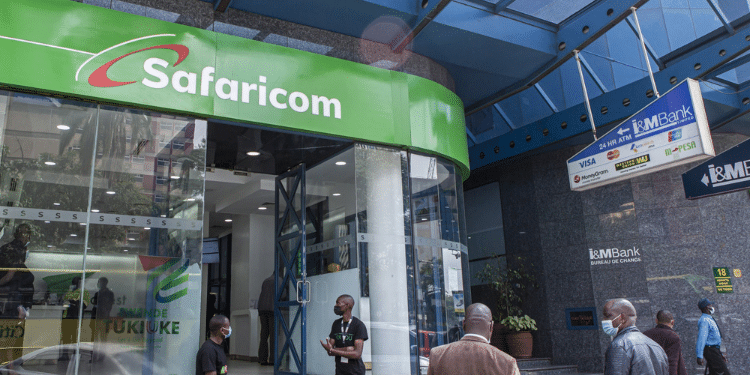Think of a world where your online order zips from a Nairobi warehouse to your doorstep in hours, powered by a postal service once known for handwritten letters.
That’s the bold vision driving the Postal Corporation of Kenya (Posta) as it moves from traditional mail to a high-speed, tech-savvy logistics contender.
With a strategic plan to raise over Sh2.5 billion by selling a stake in its Express Mail Services (EMS), Posta is betting big on e-commerce to reshape its future. Here’s how Kenya’s postal giant is rewriting the delivery playbook and why it matters.
The Big Pivot: From Letters to Logistics
Once the heartbeat of Kenya’s communication, Posta Kenya has faced a steep decline, with domestic letter volumes crashing 89.7% from 1.42 million to 145,627 between April 2024 and March 2025.
Meanwhile, private couriers have surged, handling over five times more domestic letters. The rise of e-commerce, fuelled by Africa’s mobile payment boom, has shifted the game.
The continent’s e-commerce market is projected to hit $75 billion by 2025, and Posta wants a slice of that pie.
Posta’s response? A radical transformation. By selling a minority stake in EMS, its courier arm, Posta aims to raise at least Sh2.5 billion to modernise operations.
The government will retain at least 51% ownership, ensuring public control while inviting private-sector expertise from e-commerce giants like Amazon, Jumia, or Kilimall.
This move mirrors global success stories like Deutsche Post’s acquisition of DHL, which now generates 82% of its revenue from logistics.
READ ALSO:From Click to Delivery: Can Jumia’s Cairo Super Hub Redefine Last-Mile Logistics?
Fact-Check Snapshot:
- Revenue Goal: Posta targets Sh4.1 billion in revenue by June 2025, up from Sh2.4 billion in 2024, with 35% already coming from courier services.
- Government Support: A Sh3 billion allocation is fuelling ICT upgrades and a new corporate structure.
- Market Context: Africa’s e-commerce market is set to double to $75 billion by 2025, driven by mobile payments and online shopping.
The Strategy: Tech, Hubs, and Partnerships
Posta isn’t just chasing funds; it’s retooling for the digital age. The corporation is rolling out a National Addressing System to streamline last-mile delivery, a critical edge in e-commerce.
With 623 post offices and 285 EMS acceptance centres nationwide, Posta’s network is unmatched. Add to that partnerships with tech players like Safaricom for MPost, a mobile-based virtual mailbox, and Taz Technologies for the real-time courier app Tap-A-Delivery, and Posta is building a seamless, door-to-door experience.
The government’s backing is key. A January 2025 Cabinet directive ordered the restructuring of six state corporations, including Posta, to reduce reliance on taxpayer funds.
A Cabinet memo, expected to be approved by October 2025, will greenlight the search for a strategic partner with digital-commerce chops. Posta’s CEO, John Tonui, envisions EMS as a DHL-style logistics hub, serving both urban centres and rural outposts.
Innovations in Play:
- National Logistics Hub: Launched in Nairobi’s Industrial Area, it’s a clearing and forwarding powerhouse for sub-Saharan e-commerce.
- Posta Pesa: A mobile-money platform set to launch by mid-2025, positioning Posta as a payment gateway.
- Government Services: Posta delivers passports, driving licences, and medical supplies, generating over Sh200 million from passport delivery alone.
Why It Matters: E-commerce and Beyond
Kenya’s e-commerce boom is no coincidence. With over two billion people globally shifting to online shopping, reliable logistics is the backbone of growth.
Posta’s 600+ branches and modernised fleet position it to dominate last-mile delivery, especially in rural areas where private couriers often fail to deliver.
The Kenya National E-commerce Strategy and ICT Ministry’s legal reforms, including the Kenya Information and Communications (Amendment) Bill 2025, aim to make Posta a digital frontrunner.
But it’s not just about packages. Posta’s transformation touches on financial inclusion, e-governance, and public services.
By turning post offices into Huduma Centres, Posta is delivering government services like passports and medical supplies, making it a lifeline for rural communities.
Partnerships with KEMSA and the Kenya National Blood Transfusion Service highlight its role beyond commerce.
By the Numbers:
- Network Reach: 623 post offices, 285 EMS centres, and 3,000 global destinations.
- Delivery Speed: EMS offers same-day delivery in urban areas and 1-7 days domestically.
- Financial Impact: Sh295 million contract with KEMSA for medical supply delivery.
Challenges Ahead: Can Posta Deliver?
The road isn’t without bumps. Posta’s mail volumes have declined 90% in a year, and a controversial 2 Pandora’s Box price hike on MPost virtual boxes, up 2,200% for corporates and 400% for individuals, sparked public backlash in 2024.
Bureaucracy and underinvestment have long hampered progress, and private couriers are outpacing Posta in agility.
READ ALSO:Buy More for Less with Jumia as Delivery Costs Are Set to Come Down
The Bottom Line: A New Era for Posta?
Posta Kenya stands at a crossroads. Its ambitious plan to raise Sh2.5 billion, backed by government funds and a digital-first strategy, could transform it into a logistics leader.
By blending its massive network with cutting-edge tech and strategic partnerships, Posta is set to ride the e-commerce wave. Whether it can outpace private couriers and win back trust remains the question.
Ronnie Paul is a seasoned writer and analyst with a prolific portfolio of over 1,000 published articles, specialising in fintech, cryptocurrency, and digital finance at Africa Digest News.







Leave a Reply